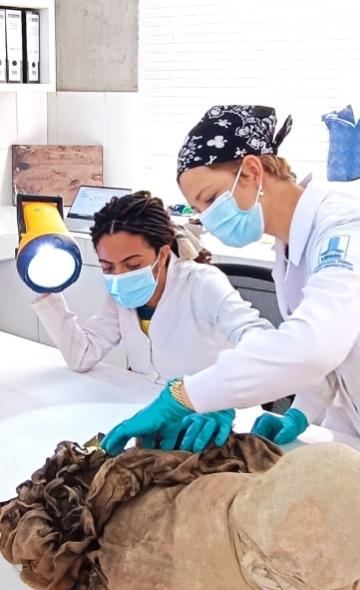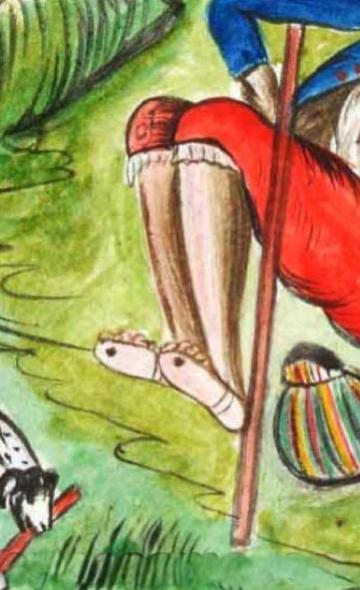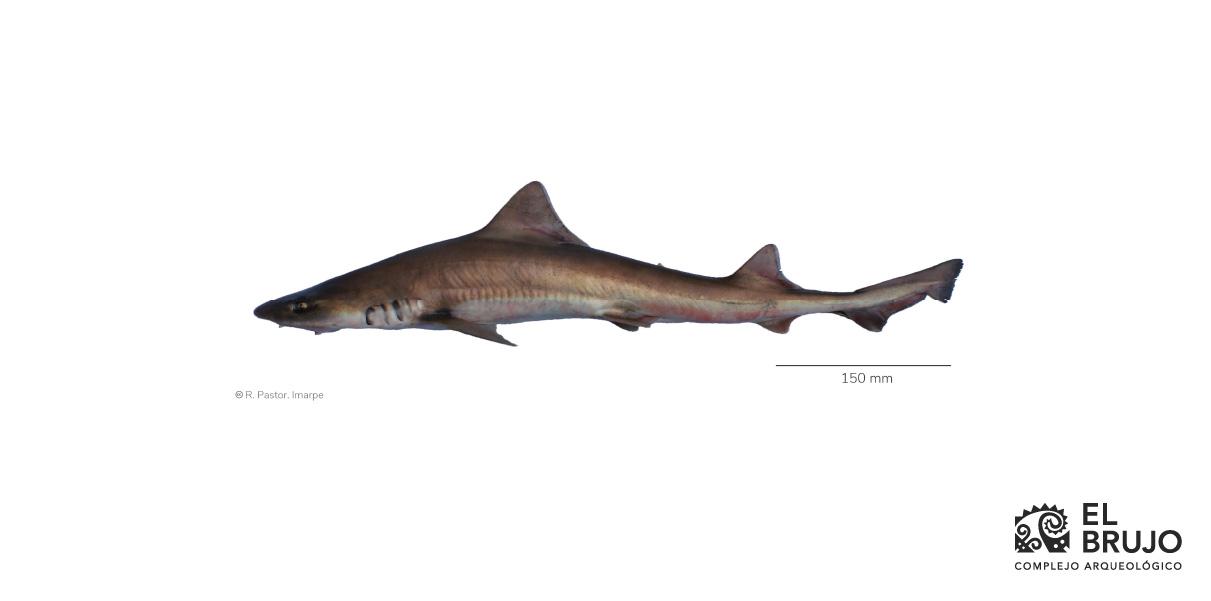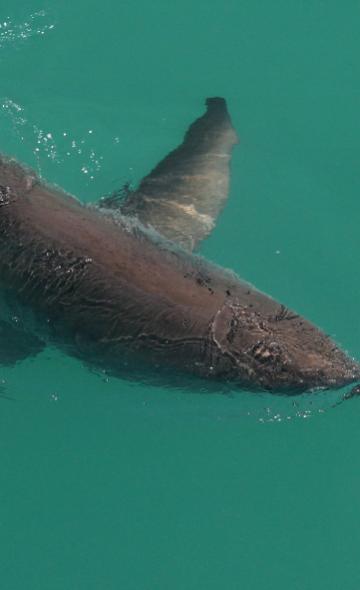- Visitors
- Researchers
- Students
- Community
- Information for the tourist
- Hours and fees
- How to get?
- Virtual tours
- Classic route
- Mystical route
- Specialized route
- Site museum
- Know the town
- Cultural Spaces
- Cao Museum
- Huaca Cao Viejo
- Huaca Prieta
- Huaca Cortada
- Ceremonial Well
- Walls
- Play at home
- Puzzle
- Trivia
- Memorize
- Crosswords
- Alphabet soup
- Crafts
- Pac-Man Moche
- Workshops and Inventory
- Micro-workshops
- Collections inventory
- News
- Community
- Andean Food Series: The Hound Shark
News
CategoriesSelect the category you want to see:

International academic cooperation between the Wiese Foundation and Universidad Federal de Mato Grosso do Sul ...

Clothing at El Brujo: footwear ...
To receive new news.
Por: Jose Ismael Alva Ch.
Jose Ismael Alva Ch. - Resident Archaeologist at the El Brujo Archaeological Complex
The tollo (hound shark) is a name that encompasses various species of sharks (cartilaginous fishes) of the Pacific Ocean. It is therefore known by various scientific names, as it includes various fish from the Mustelus and Triakis genera (see Marin et al. 2017, p. 22). Let us review together the history of this marine animal and its nutritional properties.
Biological characteristics of the hound shark
The hound shark generally ranges from Costa Rica to the Lake Region of Chile. It lives on sandy and muddy-sandy bottoms, at depths of between 35 and 300 meters. It feeds mainly on crustaceans, fish, and mollusks (Instituto del Mar del Perú 2022).
Due to the diversity of species of hound sharks, these marine animals can grow to different sizes. For example, the humpback smooth-hound shark (Mustelus whitneyi) has a normal length of between 70 and 100 cm (GEF et al. 2022, p. 69-70).
 Figure 1. The humpback smooth-hound shark (Mustelus whitneyi). Photo: Instituto del Mar del Perú (IMARPE).
Figure 1. The humpback smooth-hound shark (Mustelus whitneyi). Photo: Instituto del Mar del Perú (IMARPE).
Consumption during the pre-Hispanic era
To date, the oldest evidence of the hound shark has been found at Quebrada de los Burros (Tacna), dating to approximately between 6275 and 4500 BCE. (León 2013, p. 403). At Huaca Prieta, located at the southern end of the El Brujo Archaeological Complex, evidence for the consumption of the hound shark dates to between 5700 and 5450 BCE, during the first constructive phases of this pre-Ceramic structure (see Dillehay 2017).
Hound shark remains have also been reported at the sites of Bandurria (Huaura Valley) and Caral (Supe Valley), corresponding to the Late Archaic Period (3000 – 1700 BCE) of the Andean Central Coast.
The site of Gramalote in Huanchaco (La Libertad), whose construction and use date to between 1500 and 1200 BCE, shows evidence that the hound shark was the third most consumed fish after the blue shark and the ray (Prieto 2018, p. 64).
During the Moche Period (200-800 CE), the remains of hound sharks appear in the sectors used for the preparation of large quantities of food for ceremonies and banquets at Huaca de la Luna (Vásquez & Rosales, 2006, p. 283).
 Figure 2. Representation of a hound shark from the 18th century. Drawing published by Bishop Baltasar Martínez Compañón (Martínez Compañón 1998, f. 125).
Figure 2. Representation of a hound shark from the 18th century. Drawing published by Bishop Baltasar Martínez Compañón (Martínez Compañón 1998, f. 125).
The hound shark and gastronomy
The meat of the hound shark is prepared in different ways to make exquisite dishes. It can be eaten raw in popular ceviches, and dried in charquicán, a traditional stew that includes dehydrated meat. The hound shark can also be served baked and fried; furthermore, it is cooked in apanados and chicharrones.

Nutritional value of the tollo (hound shark)
The hound shark is a source of energy, containing 89 calories that are then processed by our body. It has a significant high-quality protein content, necessary for maintaining and regenerating the body’s cells. Furthermore, it is a source of minerals such as calcium, phosphorous, and iron.
In spite of containing low levels of B Vitamins (B1, B2, and B3), it is important to emphasize their role in the transformation of food into energy. Specifically, B1, or thiamin, helps convert carbohydrates into energy; B2, or riboflavin, contributes to the production of red blood cells; and B3 participates in the functioning of the digestive system, the skin, and the nervous system (Pérez 2018).
References
Dillehay, T. D. (Ed.). (2017). Where the Land Meets the Sea. Fourteen Millennia of Human History at Huaca Prieta, Peru. Texas University Press.
GEF, ONUDI, IMARPE, & IFOP. (2002). Proyecto Manejo Integrado Gran Ecosistema Marino de la Corriente de Humboldt. Modulo II: Recursos y Pesquería (p. 136) [Informe de avance]. Fondo Mundial para el Medio Ambiente, Organización de las Naciones Unidas para el Desarrollo Industrial, Instituto del Mar del Perú, Instituto de Fomento Pesquero. http://humboldt.iwlearn.org/es/informacion-y-publicacion/GEFMODULOIIRecursosypesqueriasVol1.pdf
Instituto del Mar del Perú. (2022). Tollo común [Instituto del Mar del Perú]. https://biodiversidadacuatica.imarpe.gob.pe/Catalogo/Especie?id=245
León, E. (2013). 14,000 años de alimentación en el Perú. Universidad de San Martín de Porres.
Marin, W., Medina, A., Castillo, G., Estrella, C., Guardia, A., & Guevara-Carrasco, R. (2017). Atlas de la pesca artesanal del Perú (R. Guevara-Carrasco & A. Bertrand, Eds.). Instituto del Mar del Perú (IMARPE).
Martínez Compañón, B. (1998). Trujillo del Perú. Agencia Española de Cooperación Internacional.
Pérez, C. (2018). Tiburón: Beneficios y propiedades [Natursan]. https://www.natursan.net/tiburon-beneficios-y-propiedades/
Prieto, G. (2018). El templo en la aldea: Excavaciones arqueológicas en una estructura ceremonial del Periodo Inicial en el sitio de Gramalote. Quingnam, 4, 33-76.
Reyes, M., Gómez-Sánchez, I., & Espinoza, C. (2017). Tablas peruanas de composición de alimentos. Ministerio de Salud, Instituto Nacional de Salud.
Vásquez, V., & Rosales, T. (2006). Análisis de Restos Orgánicos (Zoológicos y Botánicos) de CA-35 y CA-17, Zona Urbana Moche—Huaca de la Luna. En S. Uceda & R. Morales (Eds.), Proyecto Arqueológico Huaca de la Luna. Informe Técnico 2005 (pp. 275-302). Universidad Nacional de Trujillo.
Community , outstanding news





